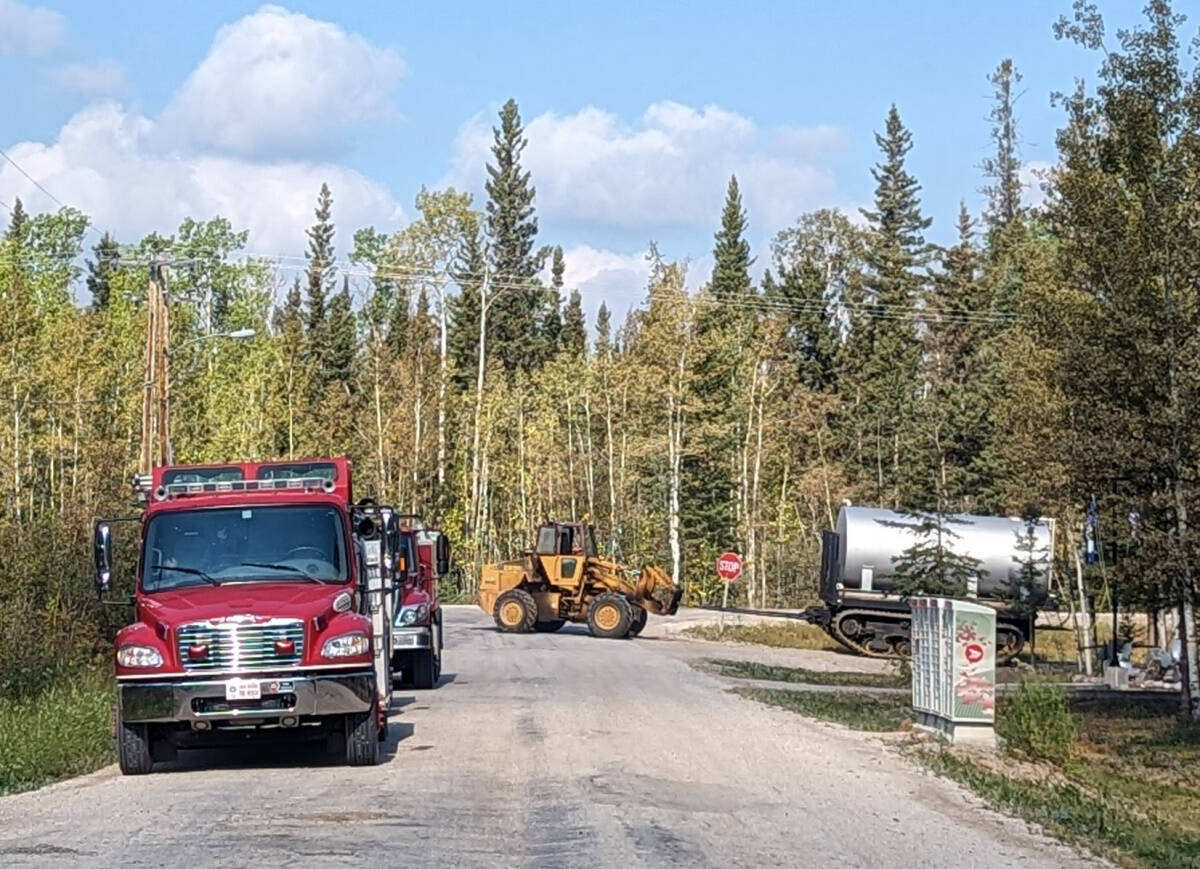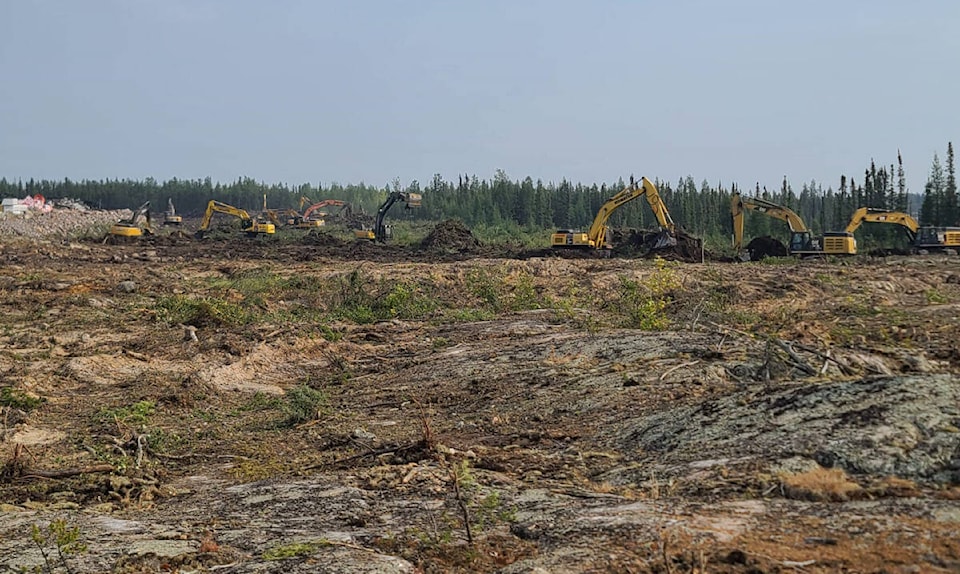Defensive lines have rapidly been carved into the earth surrounding several NWT communities threatened by wildfires.
In Yellowknife, close to 25 km of firebreak is essentially complete, Mayor Rebecca Alty said on Saturday evening.
“With a lot of hard work leading up to today (Aug. 19), we’re in a good position when it comes to our defensive lines on the west side of our community,” Alty said.
Water cannons, sprinklers, hoses and pipe line much of the route, a wide swath of cleared vegetation stretching all the way to Dettah.
It took more than 200 frontline staff and numerous pieces of heavy equipment to get the job done, according to Chris Greencorn, Yellowknife’s director of public works.
“Ironically enough, in a city surrounded by water, it’s very hard to get it where we needed it to be but we’ve managed to do that,” he said.
All the effort represents essentially two City of Yellowknife full construction seasons executed in less than six days.
“This is no small feat and I can’t stress how truly impressive it really is,” said Greencorn. “The city would never have been able to accomplish this — or a fraction of it — without our friends in the contracting and volunteer community. There’s never been a more clear example of the Yellowknife and Northern spirit.”
As of Saturday, the closest wildfire was 16 km from the NWT capital at its nearest point. The blaze was slowed somewhat by cooler temperatures and light rain on Saturday, but it’s expected to pick up steam again.
“This fire’s taking a nap. It’s going to wake up. We’ve got a serious situation to handle here,” said Mike Westwick, who handles communications for the Department of Environment and Climate Change.
READ MORE: Rain helps keep wildfires at bay — for now

In Hay River, the nearest wildfire had advanced to within eight kilometres from the town while in Fort Smith there was just four kilometres separating the community from the flames to the south.
Parks Canada stated on Sunday that the Wood Buffalo Complex — the name given to a group of wildfires — had grown to an extraordinary 408,803 hectares.
A total of 250 personnel, 55 pieces of heavy equipment and 25 helicopters joined forces to combat the massive inferno.
“Over the coming days, crews will work to complete a continuous control line using mechanical guards, sprinkler lines and natural features that runs south of Highway 5 from Salt River all the way to Fort Fitzgerald (Alta.),” Parks Canada stated. “Structural protection personnel will finish work in the Bell Rock area today and will begin setting up in the Tamarack area. In the coming days, teams will work towards having all structural protection or natural control lines around all values at risk between Salt River and Fort Fitzgerald.”
